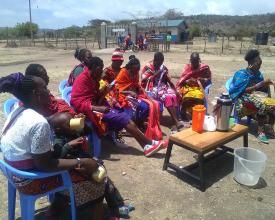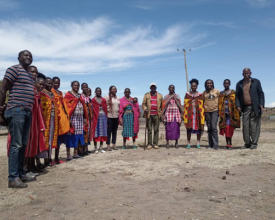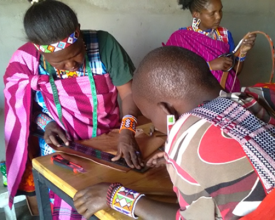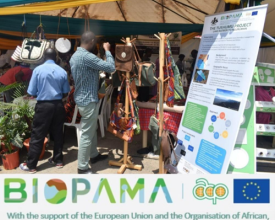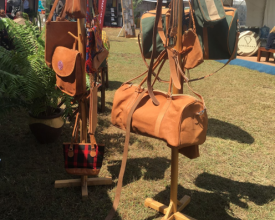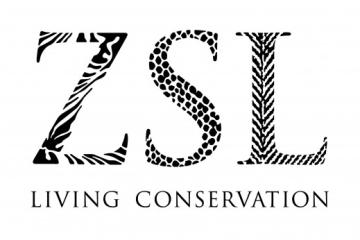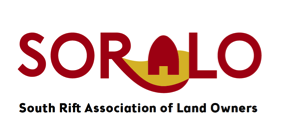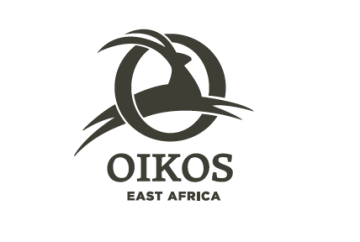
Eco-Friendly Leather Tanning and Manufacturing as a tool to improve livelihoods for women in pastoral communities of Tanzania and Kenya
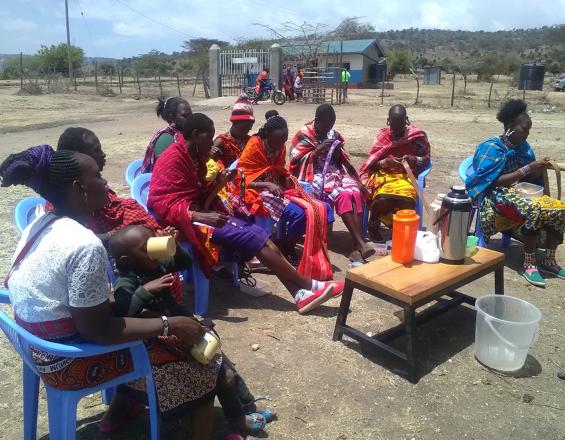
Eco-friendly Leather Tanning and Manufacturing of leather products has been one of the best solutions for pastoral women living in the dry Savannahs of northern Tanzania and southern Kenya. Livelihood diversification for pastoralist women plays a key role increasing their resilience to environmental pressures. Pastoral women are often marginalized within their communities with limited access to alternative livelihood options and limited ownership of resources. In the pastoral communities, raw skins and hides are available at a low/no value, therefore introduction of skills and equipment for the vegetable tanning process increases the commercial value of non- processed skins. In line with capacity building and provision of equipment, this initiative also provided a good environment for market linkages in the two countries. The eco-friendly leather curing activity has created a livelihood option for women, an income generating activity and also introducing another livestock by-product in the pastoral community.
Context
Challenges addressed
Social Economic and Environmental Challenges
A major challenge to maintaining a resilient pastoralist community facing the pressures of climate change such as prolonged drought and flooding, has been the lack of diversity of livelihood options and few opportunities aside from traditional pastoralism. The gender inequality regarding formal education is matched by a lack of technical capacity and is compounded by their limited access to tools and resources to facilitate change. Thus, although cheap resources have been available in the locality in the form of skins from livestock, their capacity to transform this into economic gain through craftwork in curing and stitching leather, business skills and opportunities for microfinancing has been very limited. The opportunity to learn from other communities has been prevented by lack of mobility and resources.The lack of economic opportunity within these communities consequently contributed to the degradation of the soils and landscape on which they depend.
Location
Process
Summary of the process
For a community livelihood program to be successful and sustainable, effective stakeholder engagement, training and capacity building as well as marketing and promotions are necessary. Stakeholder engagement and stakeholder mapping exercise was done at the beginning of the intervention which enabled a clear engagement plan to be set since the inception of the project. Involvement of key government and community stakeholders ensured acceptability of the intervention but also confirmed the demand of having Leather Capacity building in the pastoral areas. The content of the training and capacity building exercises was formulated from this initial engagement hence relevant content was created. Leather Training beneficiaries in both Kenya and Tanzania were selected by the local government representatives using an agreed selection tool. During training sessions, there was active participation of the government representatives to check the quality and the methodology used. During and after training, beneficiaries produced items which needed to be sold in the local and international market and an approach was designed on ensuring the leather items are sold and the community receives the financial benefits of their hard work.
Building Blocks
Stakeholders Engagement and Partnerships
The Leather Tanning and Manufacturing for women has been made successful through stakeholders engagement and partnerships. Among the key stakeholders includes the government representatives who have played a key role from building the concept, selecting the beneficiaries, participation in the training and making follow-ups for the leather centers. Access to a building to be equipped has been possible through this collaboration. The District Community Development officials have taken a clear role to monitor and supervise the women groups, assist them in registrations and even provide access to market during any events/fairs organized by the government.
Other key stakeholders include private companies, lodges, individuals in the areas who have provided markets for women’s produced goods.
The implementing partners to the project including ZSL and SORALO have been supportive in ensuring that the solution is rolled out successfully in Kenya as it was in Tanzania. They carried the role to ensure that OIKOS EA is introduced in the communities in Kenya and they have enabled good flow of communication with the government in the project area.
Enabling factors
Good collaboration and communication has made this support possible. All stakeholders were clearly engaged at the early stages and they had a buy-in of the idea. They have been willing to support the idea and to create a conducive environment for team members to work.
Lesson learned
In the course of implementing the solution, we have learned that Stakeholders engagement is very key in the success of any project activity. Good communication and regular updates have facilitated the effective engagement of the stakeholders. It is important to identify the stakeholders at early stages of project design and implementation so they can also assist to give their input on how to be successful.
The major challenge of engaging government officials sometimes is budget implications and defining the frequency of such engagement. It is important to have an idea of how much budget is available and how many meetings/visits that the budget can cover so as to plan better. Sometimes there is a lot of bureaucracy that comes hand in hand with engaging stakeholders, each wanting to skew the ideas/solution to their best interest. Its is very crucial to have a constructive engagement and determine clear roles of each stakeholder from the beginning. In some cases, it is recommended to sign Memorandum of Understanding and have the roles clearly written down.
Training and Cross Border Learning Exchanges
Eco-Friendly Leather Tanning and Manufacturing knowledge is an upgraded concept of curing naturally hides and skins from livestock. The initiative targets vulnerable women who are illiterate and have limited opportunities as well as skills.
Training has been tailored to specifically reach these target beneficiaries using simple instructions and toolkits as well as a more practical approach. The training has been conducted in Maasai language mostly and Kiswahili in other cases. The simple methods of measurements and cutting has proved to be adaptable and understood even among the illiterates. For most women, this has been one of the only formal skills they have received in their lives. Most importantly, during the training a set of skills were identified among beneficiaries and nurtured in the followup sessions.
The first Learning exchange done where women from Kenya traveled to Tanzania and learned in an established Leather Center was a remarkable turn and it created a huge impact in how they received the initiative. They were very eager to have more women in their country trained and benefit from the activity. The knowledge and skills offered have changed the mindset and transformed the livelihoods of women.
Enabling factors
The training design, methodology and practical exercises were some of the best experiences that made this initiative possible. Capacity building for women who have little or no formal education can be a challenge. The training was designed to accommodate this need and make the women understand the concept but also choose to be part of what they are more capable of. For example, older and illiterate women were more focused on beading the leather products such as belts, while some who have some formal education were more engaged in measuring and cutting belts.
Lesson learned
-
Training and capacity building has to be tailored to suit a specific context, needs and demands of the target beneficiaries. Language, culture and the fact that women also take such a huge role in their families every day need to be taken into account when deciding the training plan.
-
The learning exchange between peer groups/ women is very powerful in transforming mindsets and creating passion. The cross-border learning exchange can be expensive but it is worth setting out a clear plan and budget that will make this journey educational and interesting to the participants.
-
It is essential for anyone who is interested in conducting community training and capacity building to take time in designing a relevant content, methodology and even dedicate half of the time to practical exercises. It is also equally important to take into account all other cross cutting issues such as gender roles, language, distance, and levels of literacy.
Creating Market Linkages and Promotion of Eco-Friendly Leather products
Community livelihood initiatives have to be linked to market and promotion for them to be sustainable and provide a financial impact that they have been designed to bring forth.
When building the capacity of a community to produce eco-friendly items, there is a need to establish a very good foundation of how these products will reach the market but also what are the demands in the market when it comes to quality criteria. Leather items in particular especially items made with Naturally tanned leather stand a chance in the market, however they need to meet high quality standards and be promoted so as to enhance consumers to know of their existence. For this solution initiatives were taken to assess the market for Leather products in main cities such as Nairobi town, Arush Town and even Zanzibar to identify shops or dealers who would be willing to purchase the products.
Promotion of the products in different platforms is also very key through catalogs, social media and participation in fairs/exhibitions. Market linkages and promotion is a bridge for the community livelihood initiatives to bring financial benefits and make communities willing to continue the production chain.
Enabling factors
- Marketing Linkages and Promotion of Eco-Friendly leather products have been made possible through a market assessment conducted to identify dealers/supplier/potential buyers as well as to identify the types of items and their demand in the market.
- Social Media promotion and participation tourism Fairs have attracted Lodges and Camps to order items for their curio shops.
- Through the Marketplace Literacy program designed by OIKOS EA, the beneficiaries were able to receive additional training on consumer knowledge, quality production as well as marketing skills.
Lesson learned
- Market Linkages and promotion of community based Eco-Friendly products is a very important step toward attaining sustainability of any livelihood program. Communities will continue to engage in these activities if they receive financial gains and see their lives being transformed. For sustainability to be realized, a lot of time and financial investment is needed to support the communities to be able to produce products at a high standard and meet both local and international market demands.
- Business skills and Financial Management skills are also very crucial to form part of the livelihood diversification programs. Many community livelihood programs fail due to lack of business mindset and proactiveness of the members to take charge of their business. Financial mismanagement has affected the commitment of community members to continue with the initiative leading to high levels of dropouts and hence less production. Proper engagement and commitment of the community is a success factor for any livelihood initiative.
Impacts
-
10 women from Kenya visited Tanzania’s leather tannery in Longido to learn in practice about leather tanning skills. This learning exchange was a remarkable exercise to enable women from the two countries to share experiences and opportunities available in their area.
-
About 35 women from Kenya and Tanzania were well trained in skills for curing leather naturally and for producing final leather products. The women have income which has supported their families.
-
2 leather centers in Tanzania and Kenya well equipped with tools to conduct leather tanning and for the manufacture of final products.
-
Reduced biodiversity pressure because of diversified sources of income for youth and women.
-
Acceptance, Support, ownership and recognition of the initiative from the stakeholders and government agencies has made a major impact towards sustainability of the intervention.
-
Livelihood improvement and financial gain to the direct beneficiaries who are now able to support their families through the initiative.
-
Reduced pressure to the environment where women are now less engaged in unsustainable practices such as tree cutting and charcoal business.
Beneficiaries
- Loita Community-Kenya & Kitumbeine community in Tanzania
- District Community development departments in Kenya &Tanzania
- Lodges, Camps & Curio shops in Tanzania & Kenya
- Individuals buying leather products
Sustainable Development Goals
Story
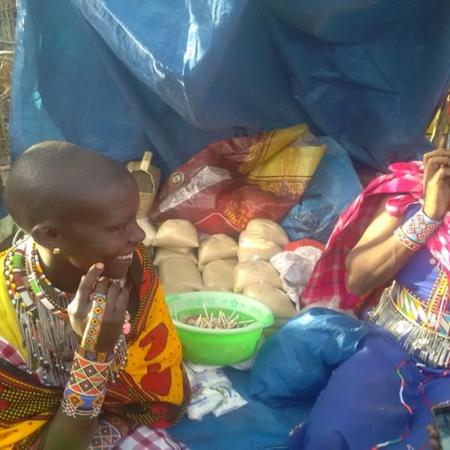
Eveline Shuma from Olmesutie-Loita, Kenya
Eveline is one of the Leather Training beneficiaries who was lucky to join the Exchange visit to Tanzania. After attending the training, she was excited to be back in her country with her toolkit and continue with the production of leather products from home. She explains that “When I went back home, I started working on women's beaded leather belts which are very popular here in Loita! I produced and sold 3 belts and received a total of 10,500 Kshs. The money I got from the sales helped me start a small shop during the weekly market day every Saturday”.
Eveline showed her eagerness to practice what she learned and even work from home during her free time to produce leather items. She even went a step further to seek market for the goods she produced and was able to sell. Eveline also decided to re-invest the money she received in another business of selling goods on a Market Day in her village. From the look in the picture, she has also made herself a leather handbag, this means she has ownership of the intervention and she is proud to wear the bag.
It is evident that Eveline, as any other woman in the Pastoral community had no access to any economic activity before the intervention and she took this chance with good spirit to prosper economically. She also feels empowered and economically capable to support her family in providing education for kids and food for her family.
Her capacity as a woman can not be understated, she is an example of a capable woman who only lacks the means to utilize her handcraft and business skills. To-date, Eveline stands as a good example of strong women who can influence and empower others.
